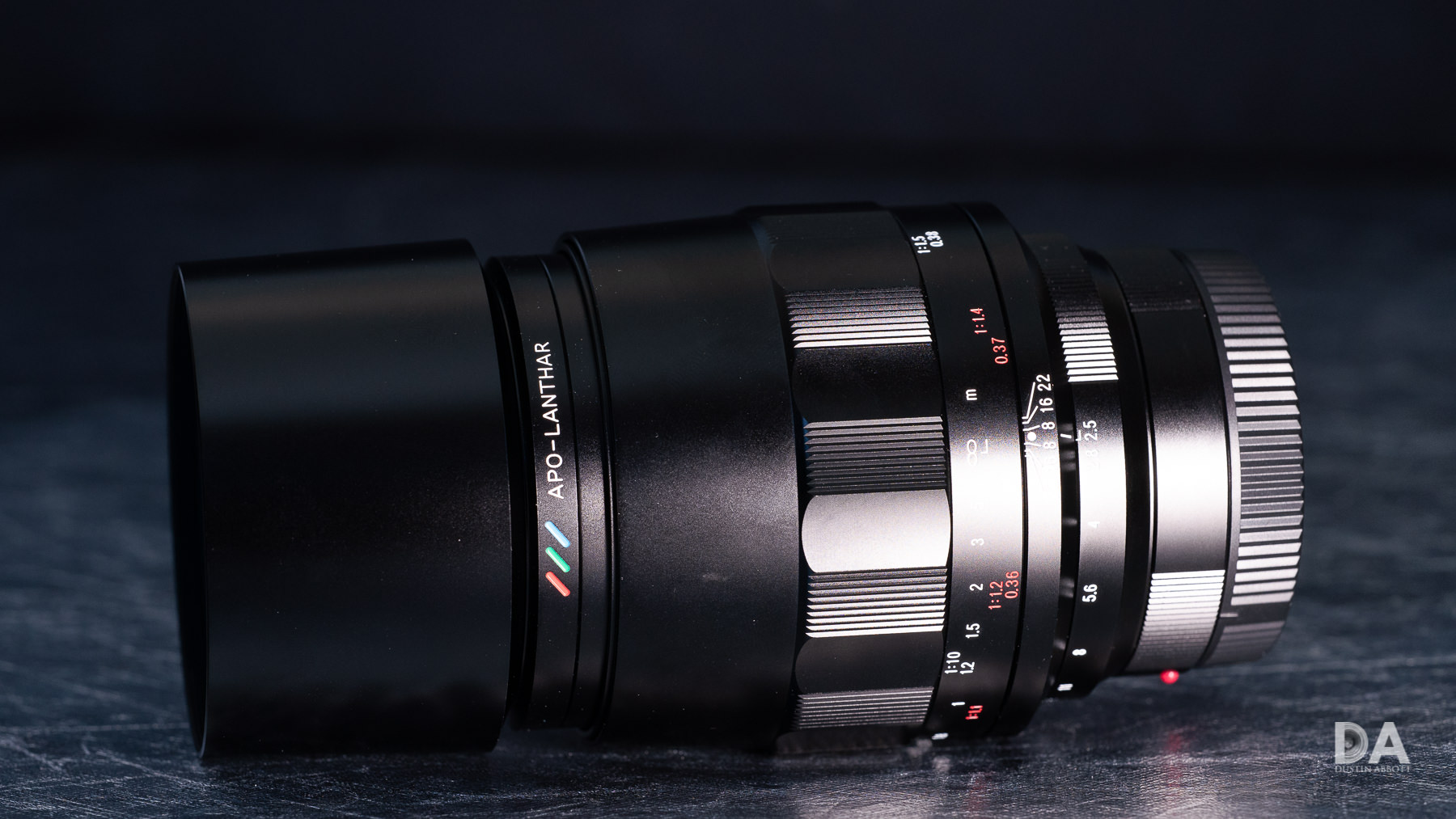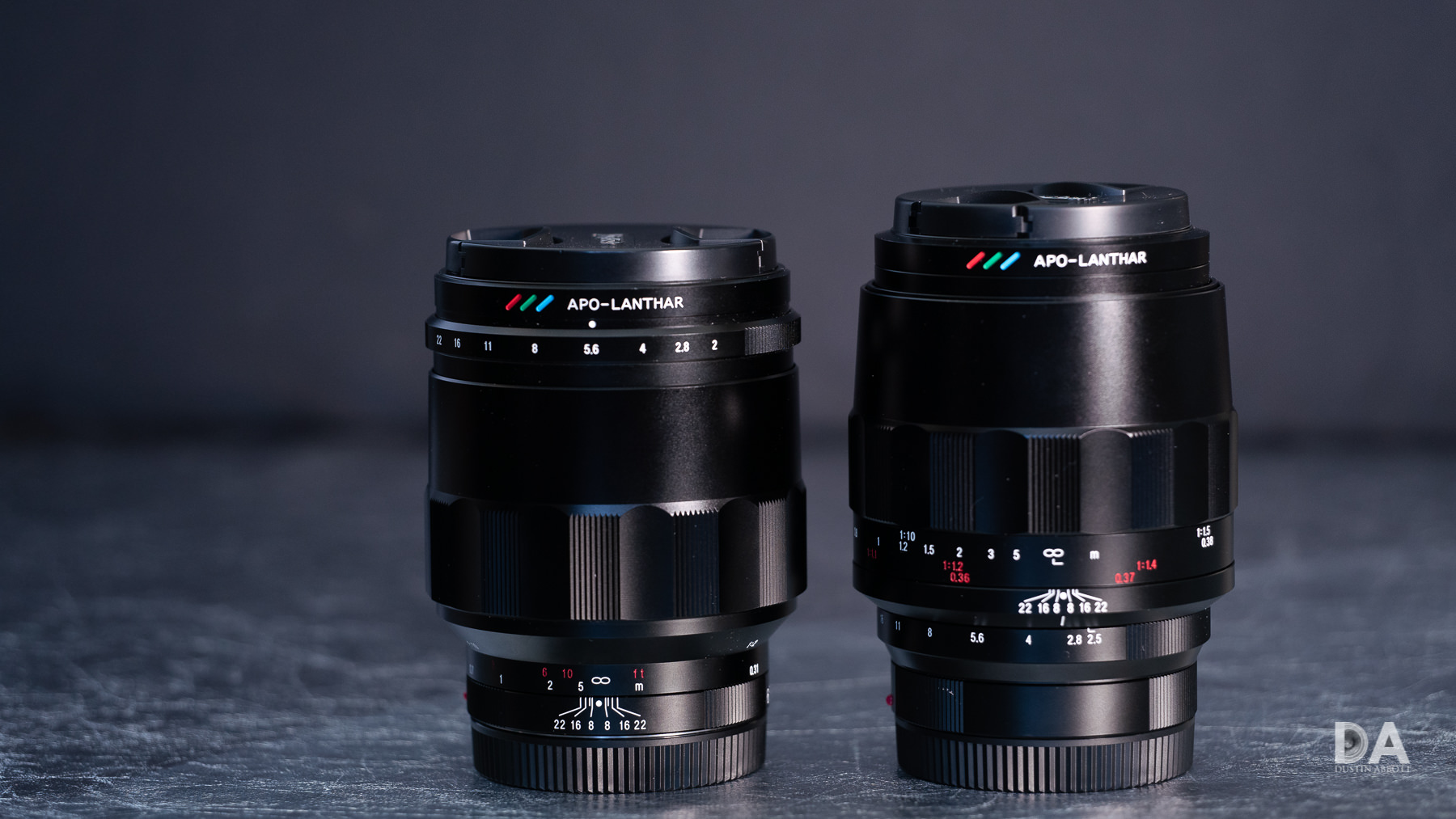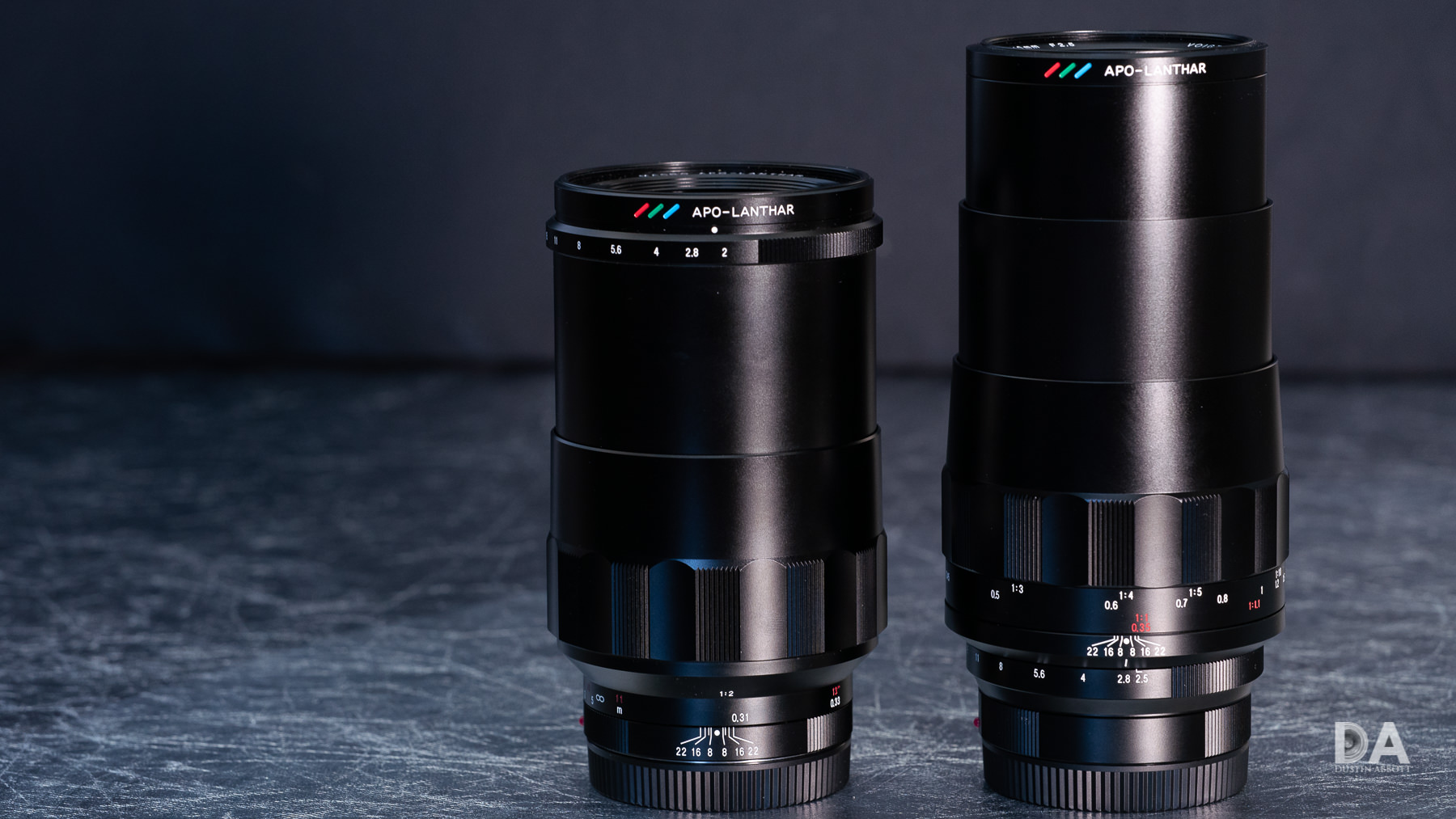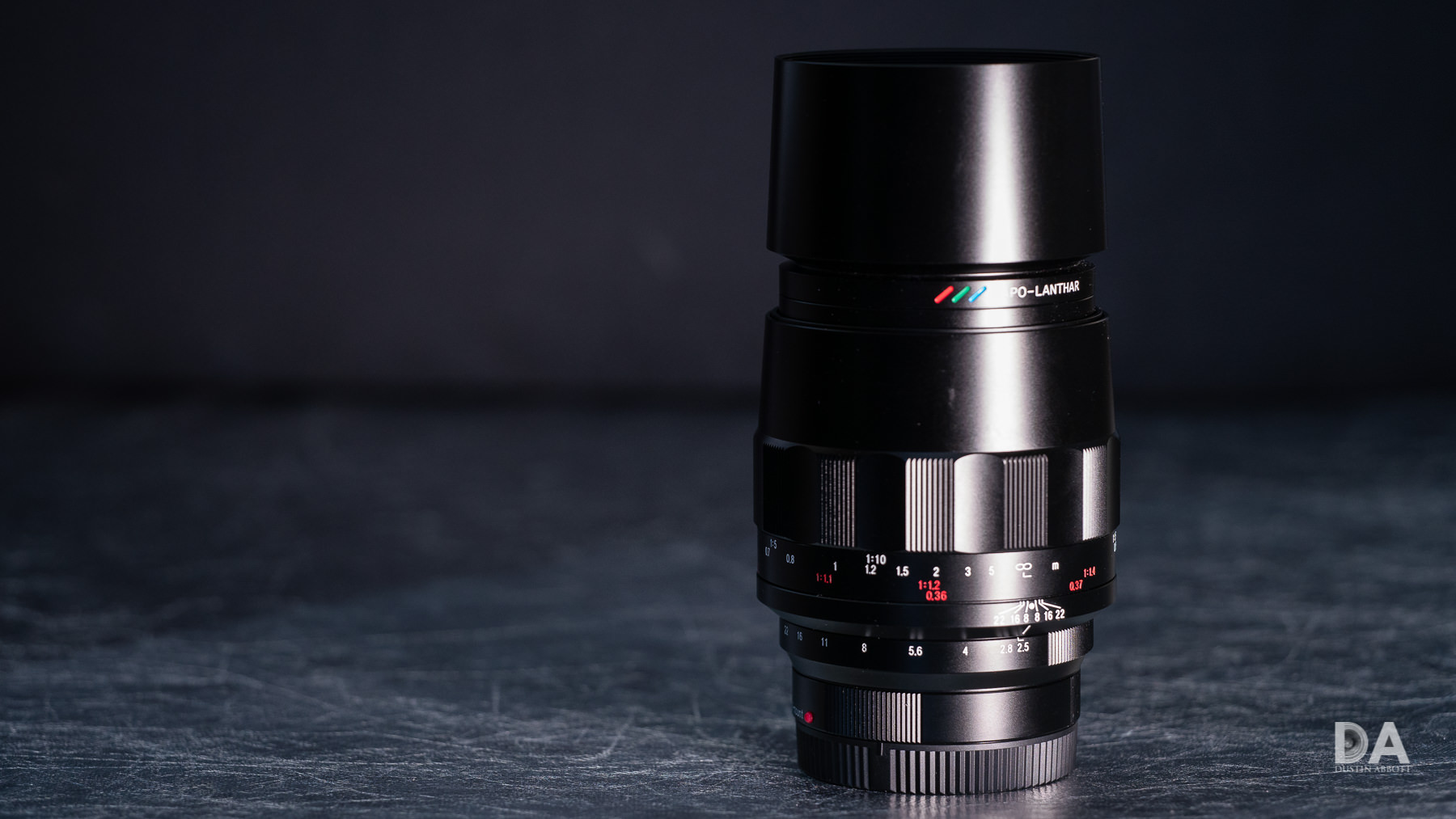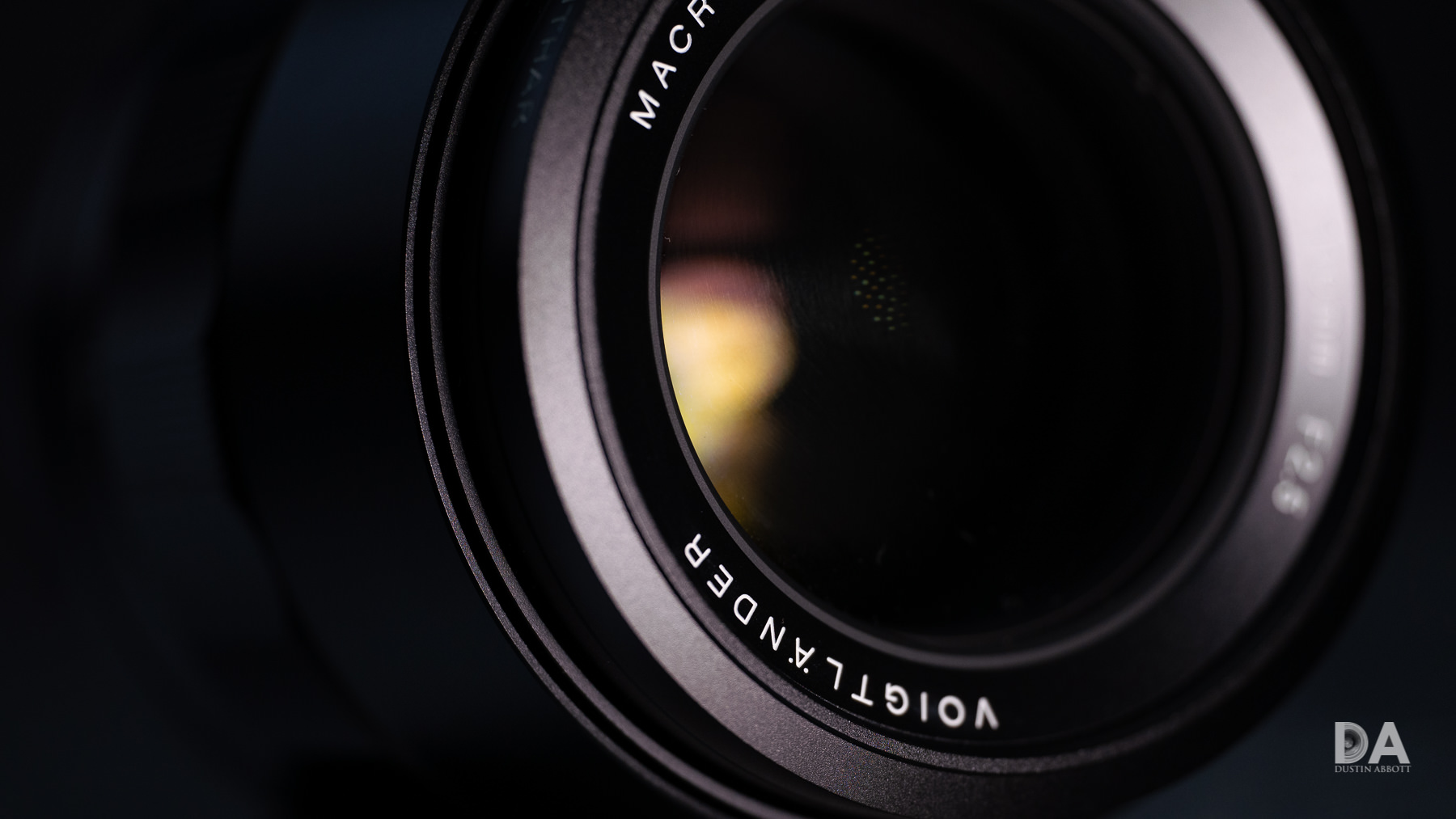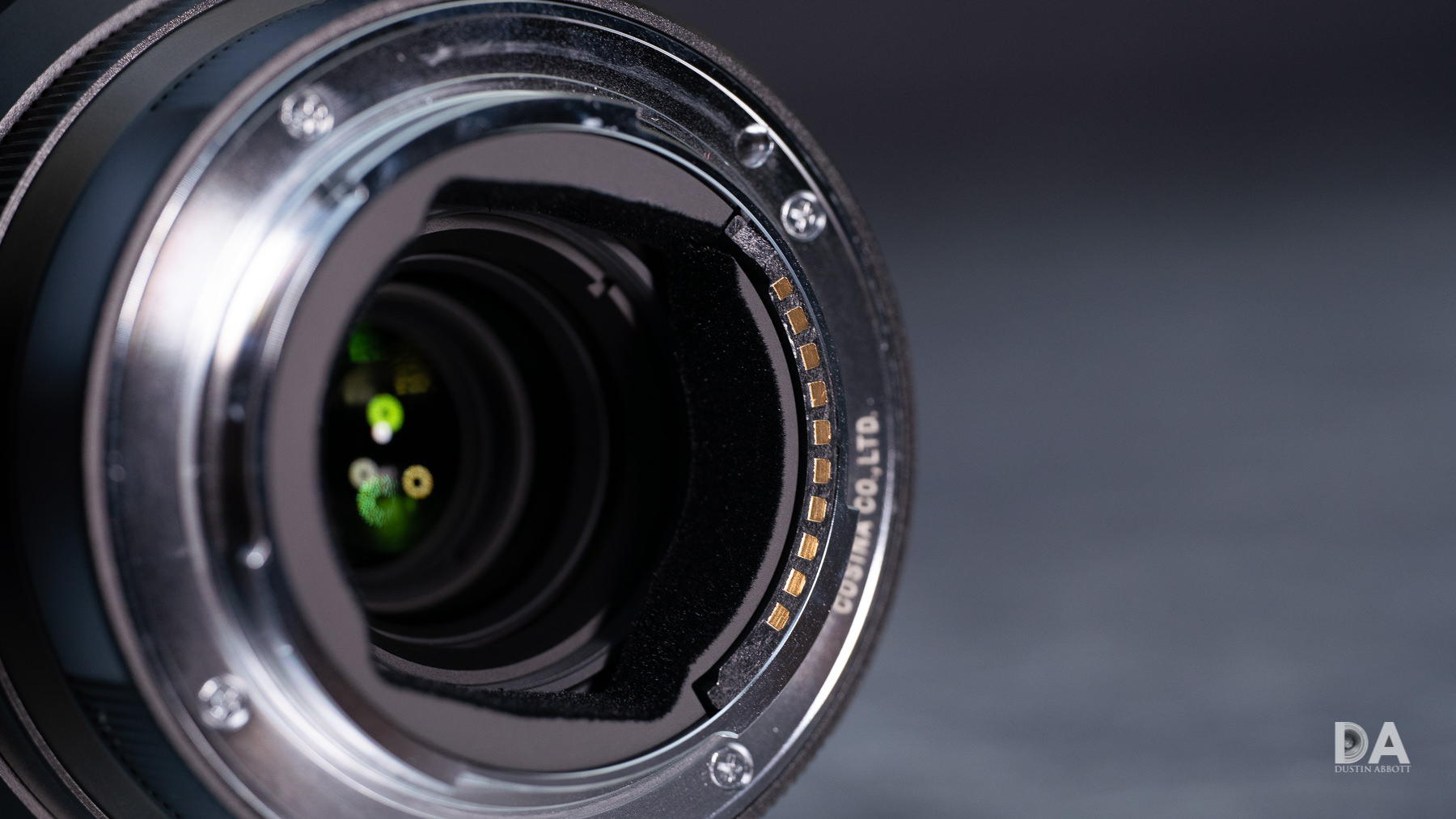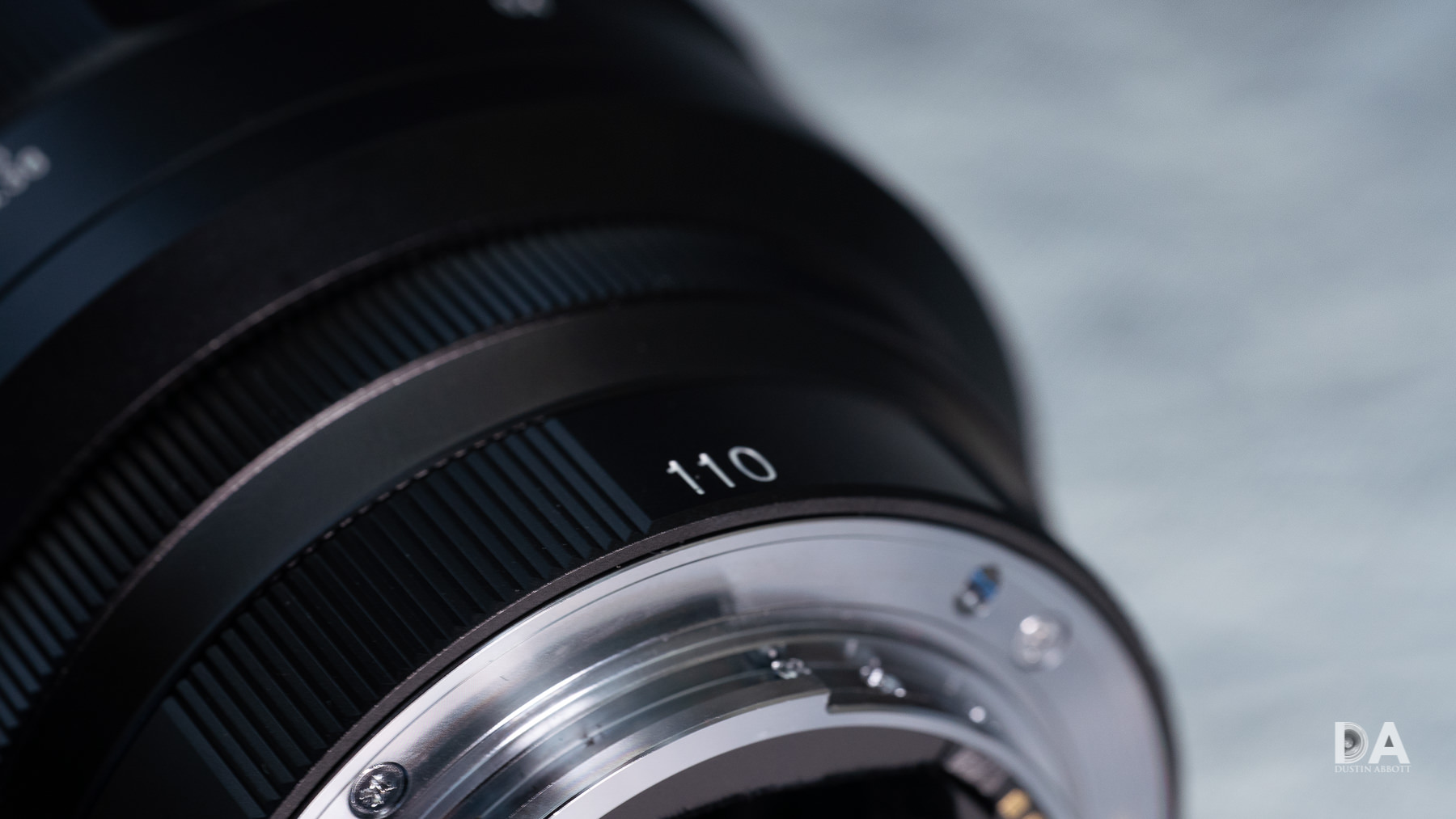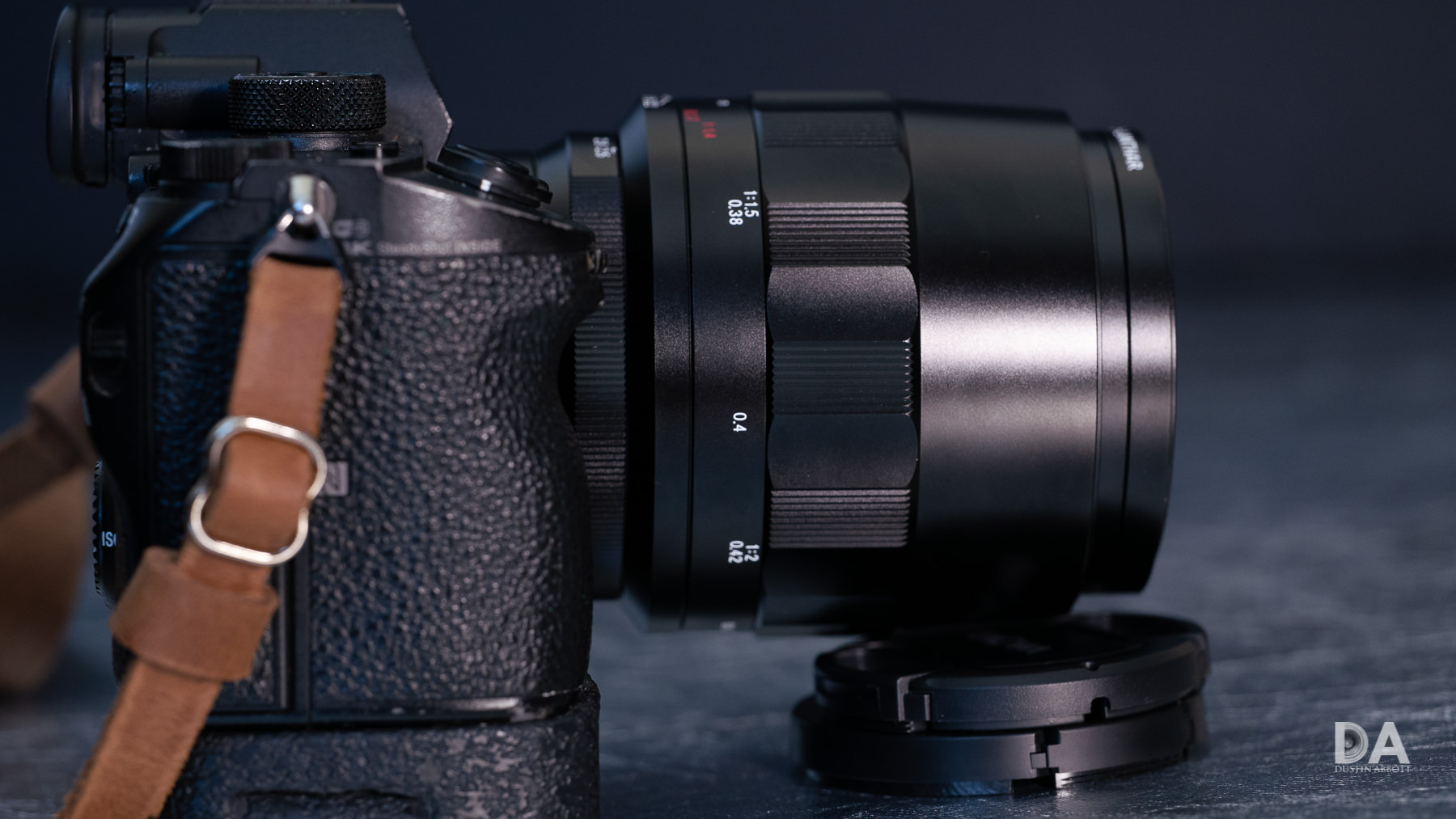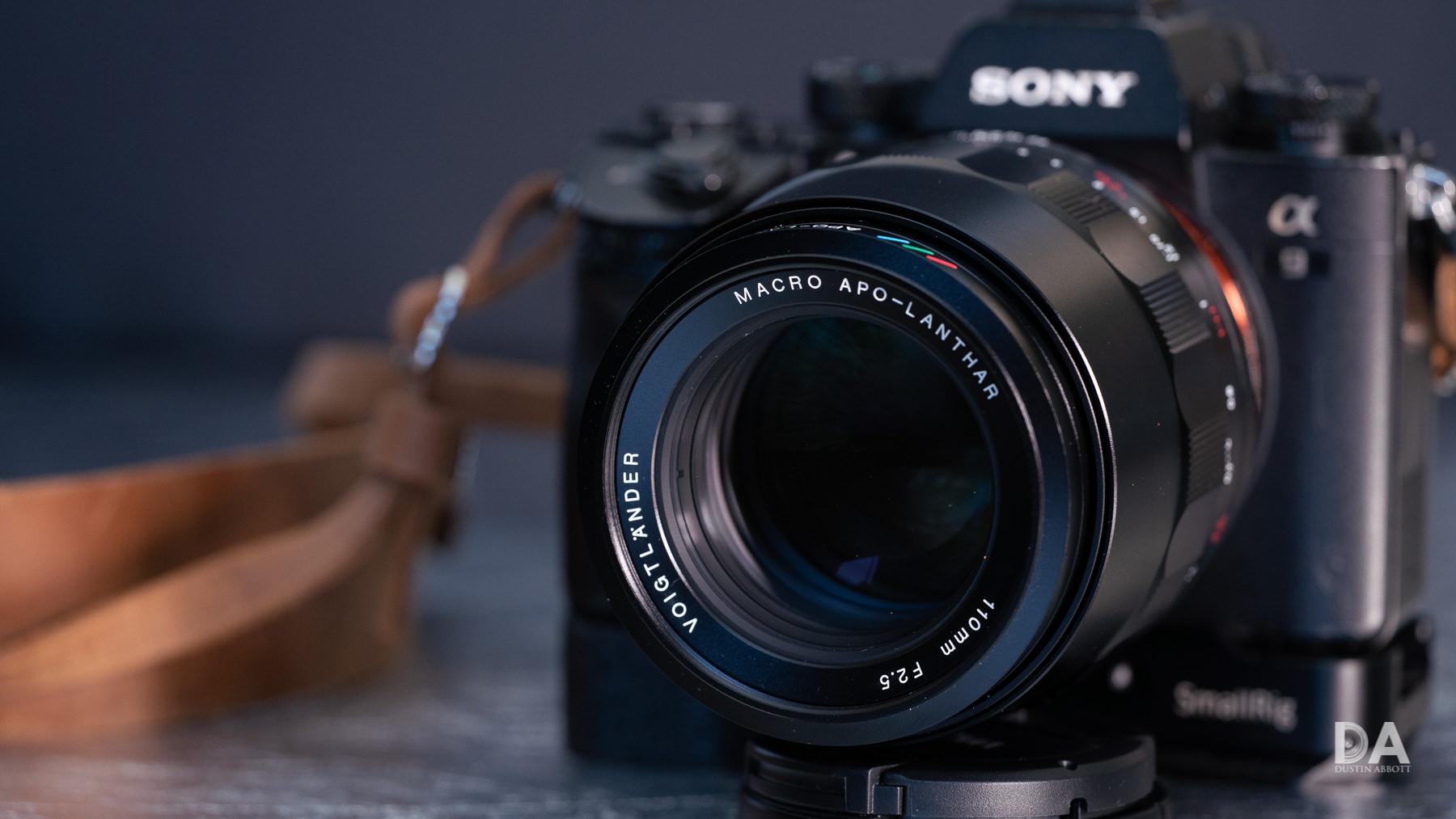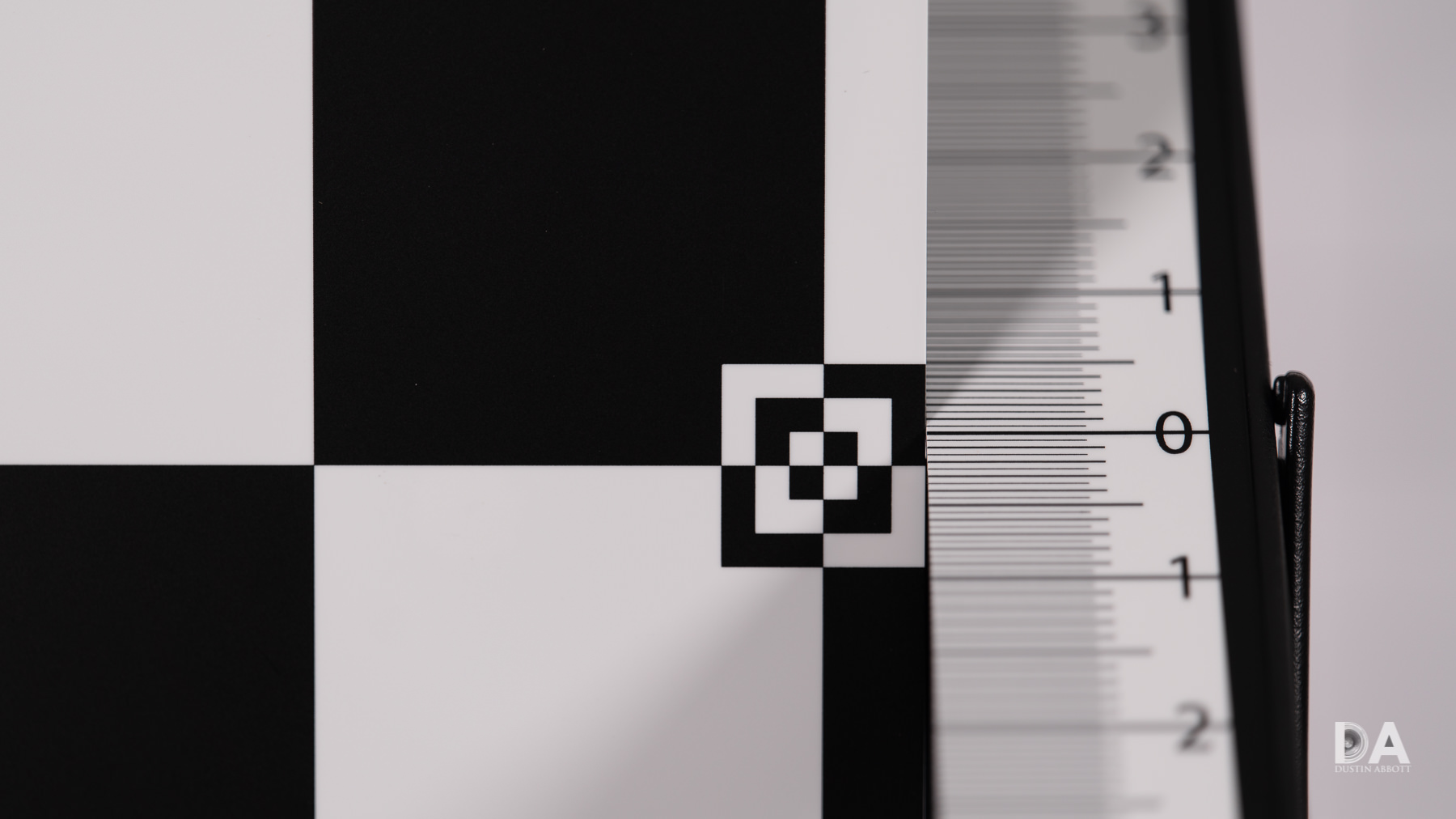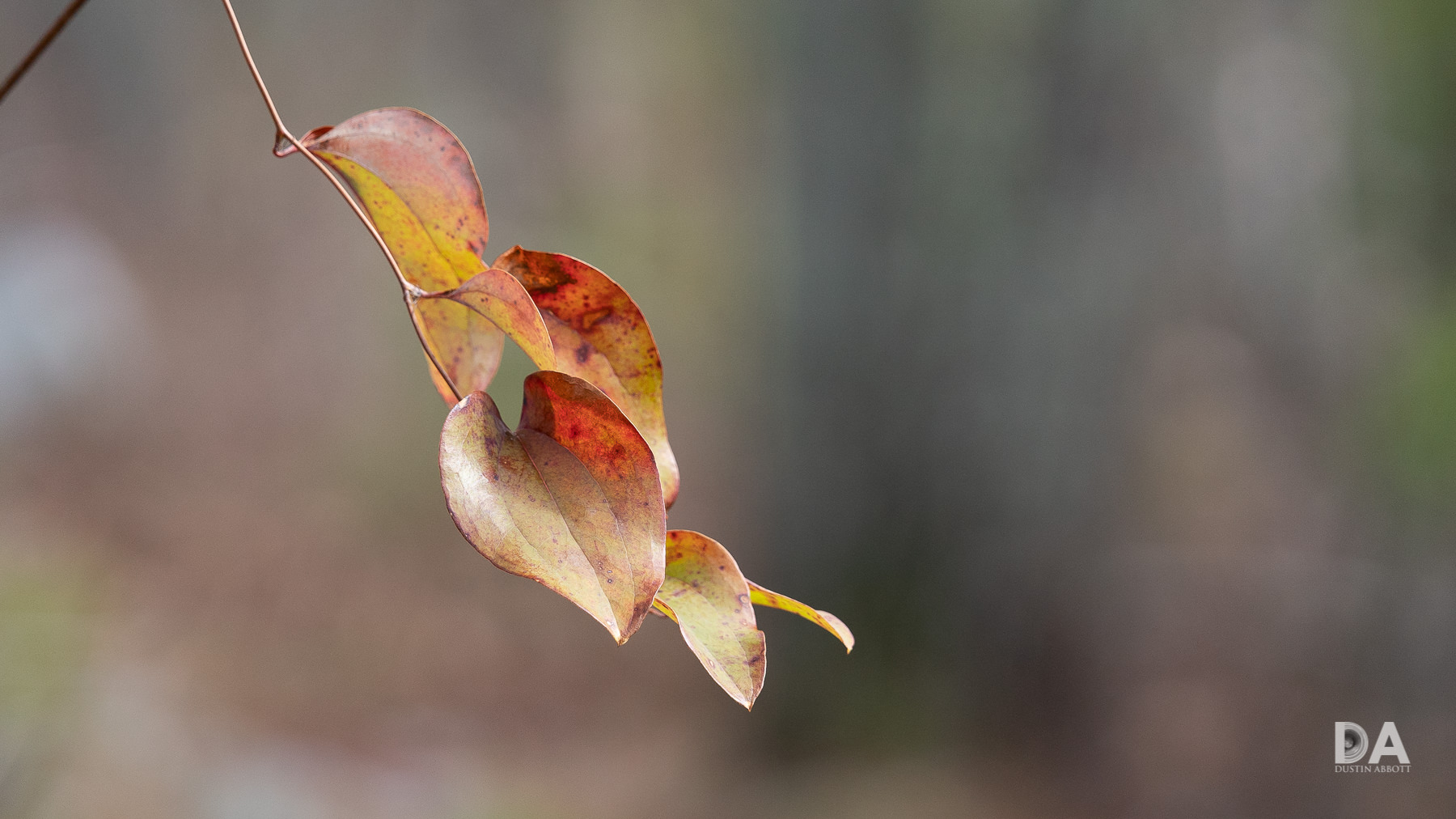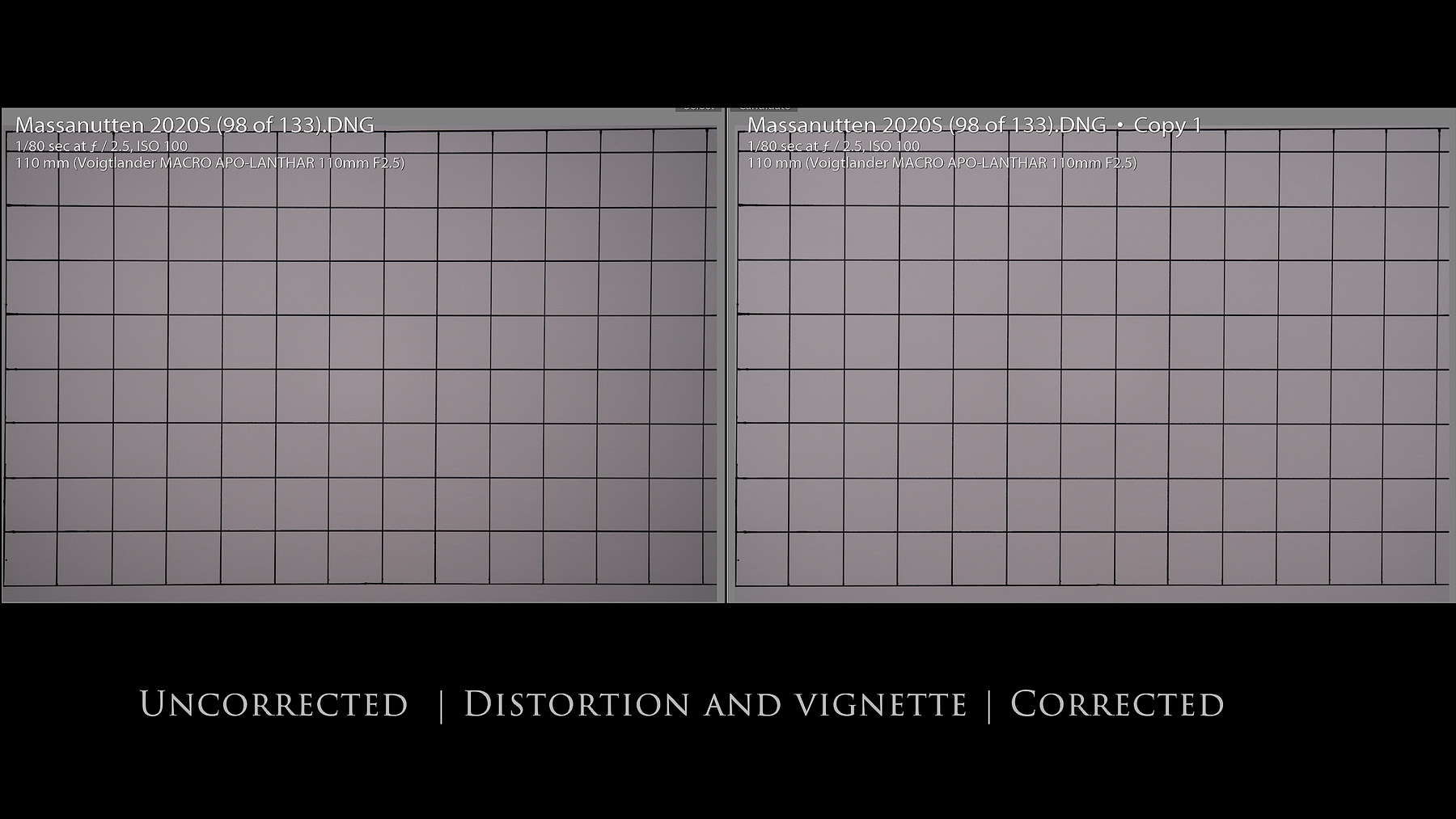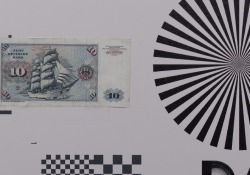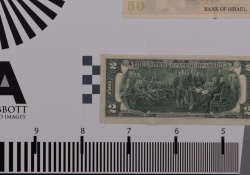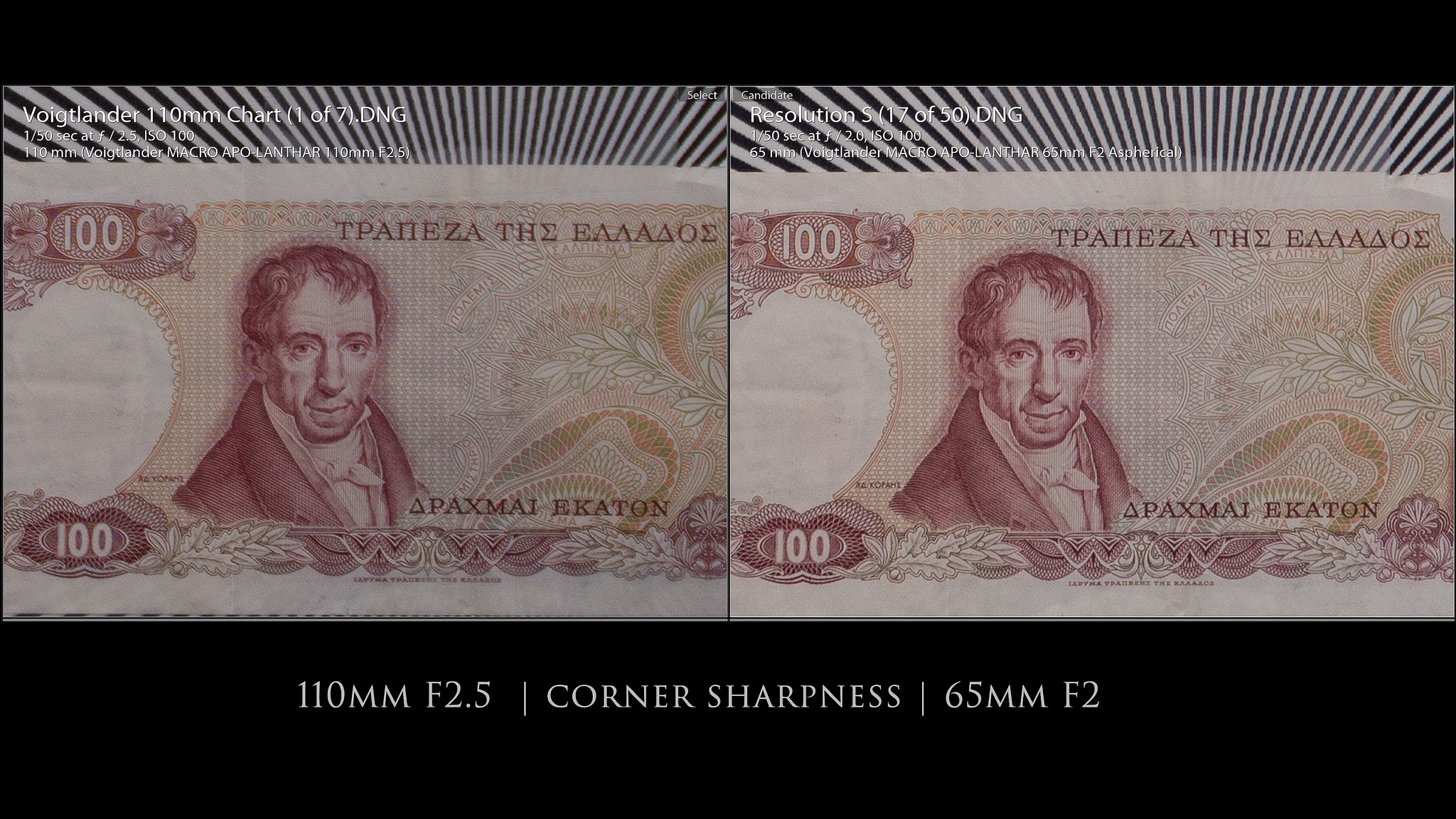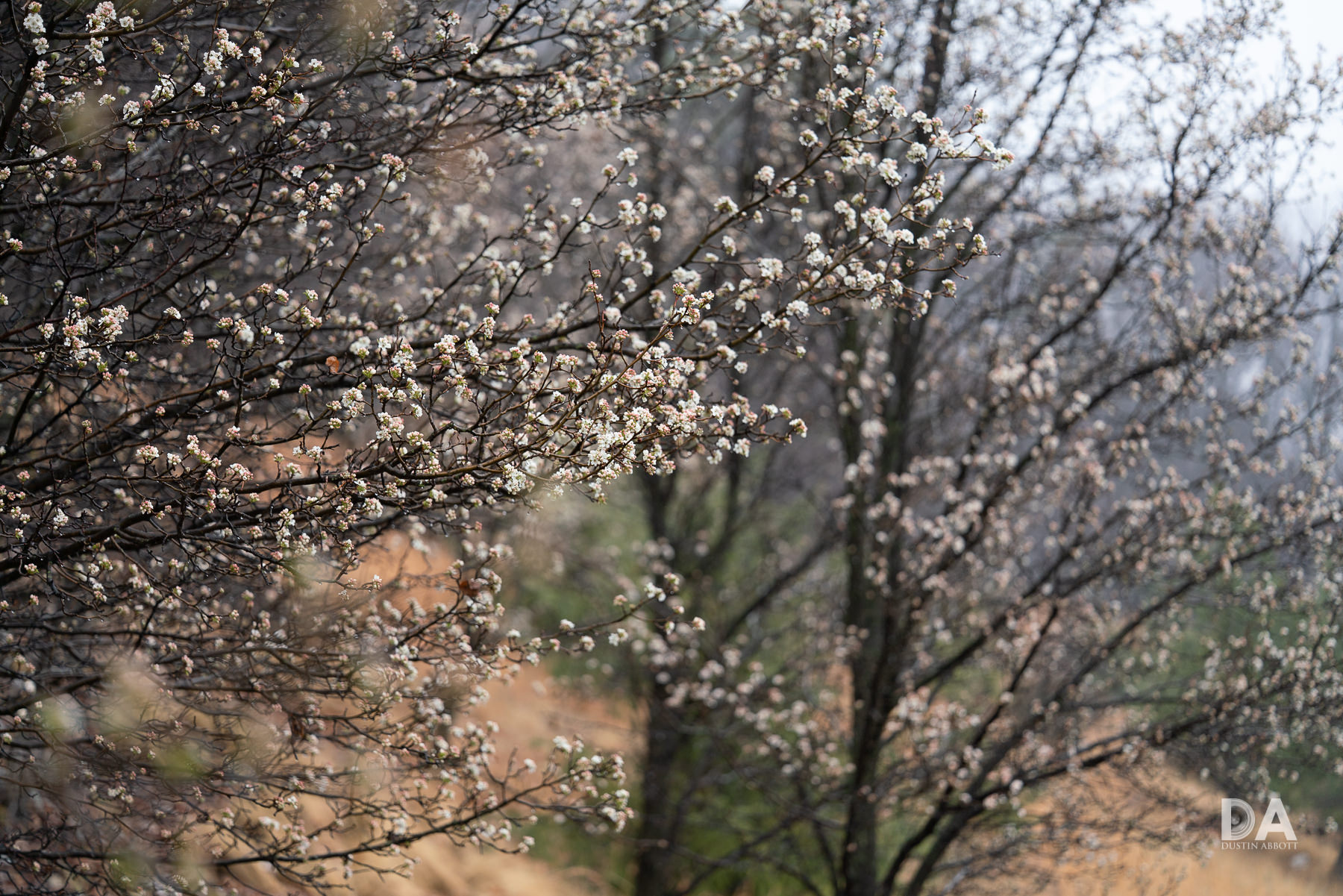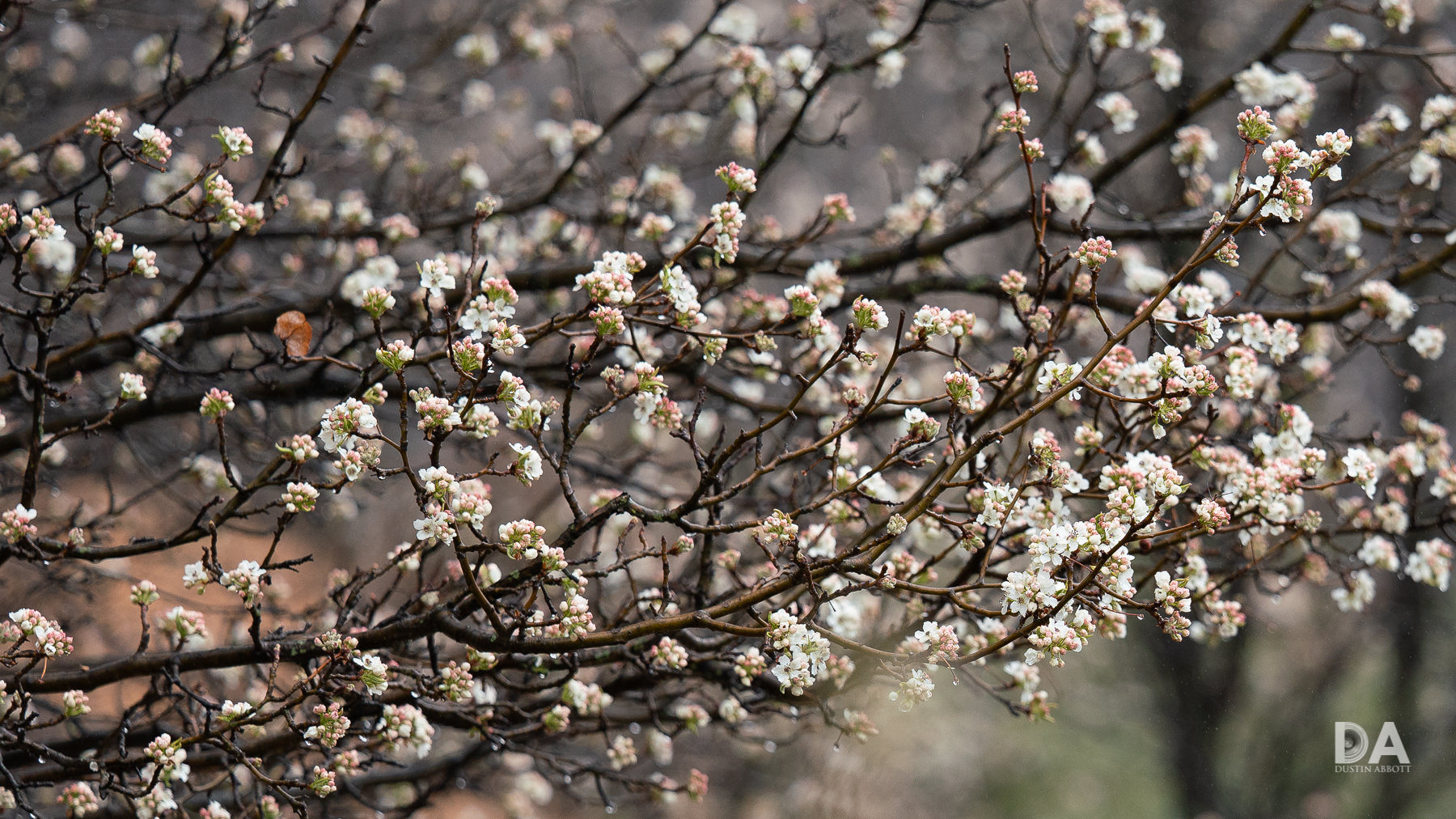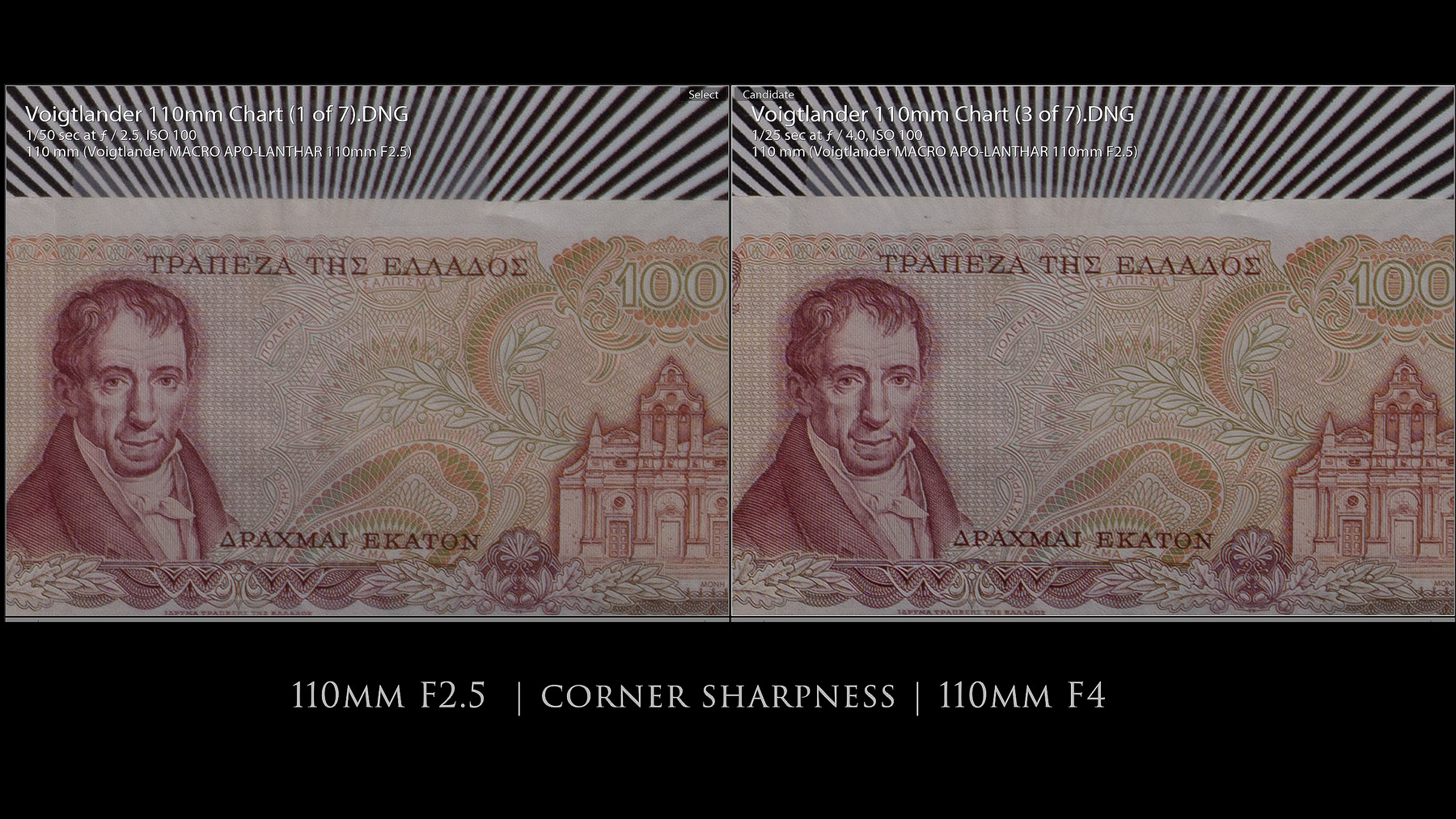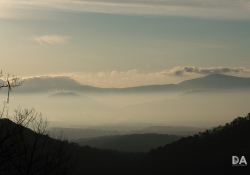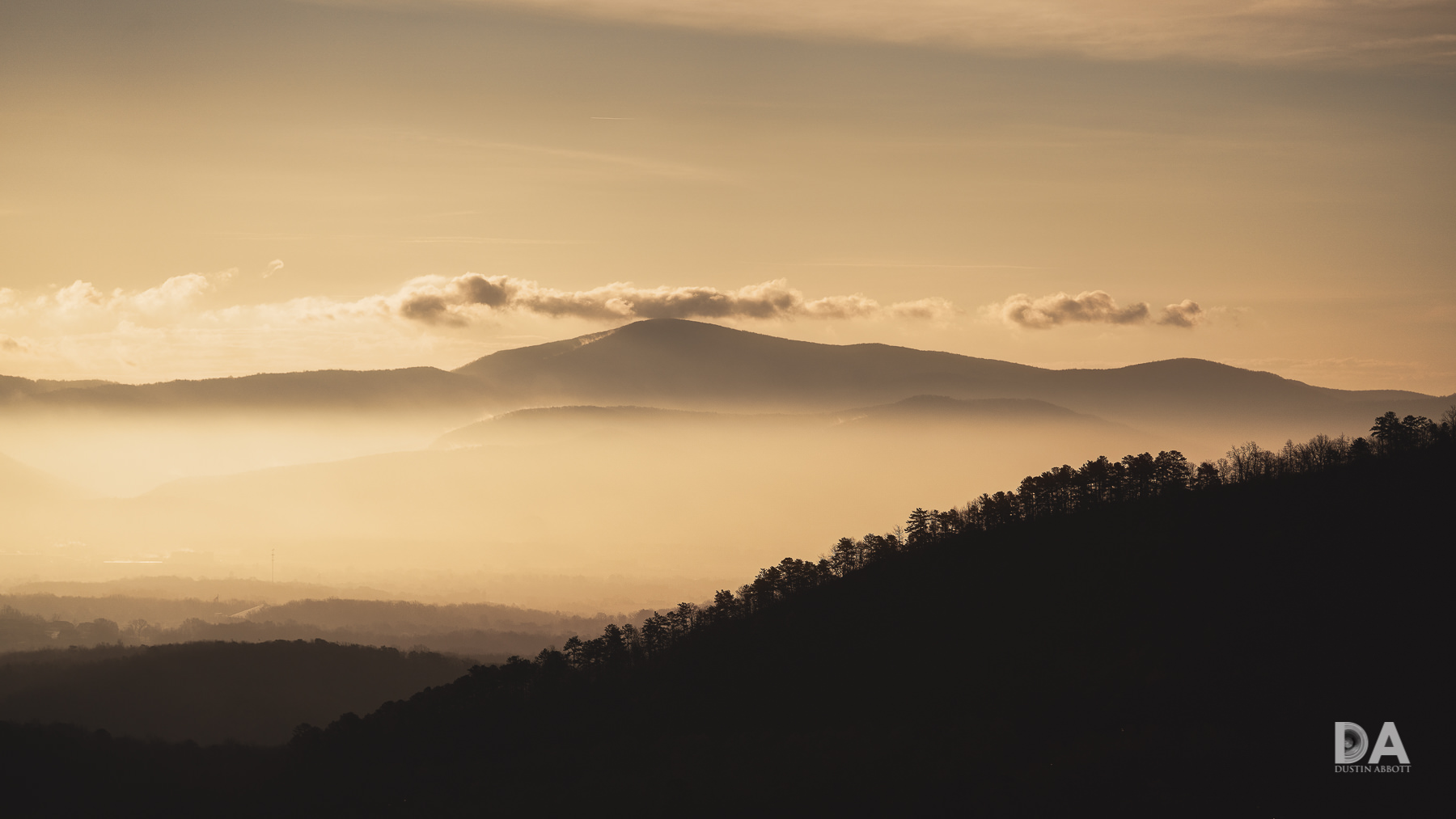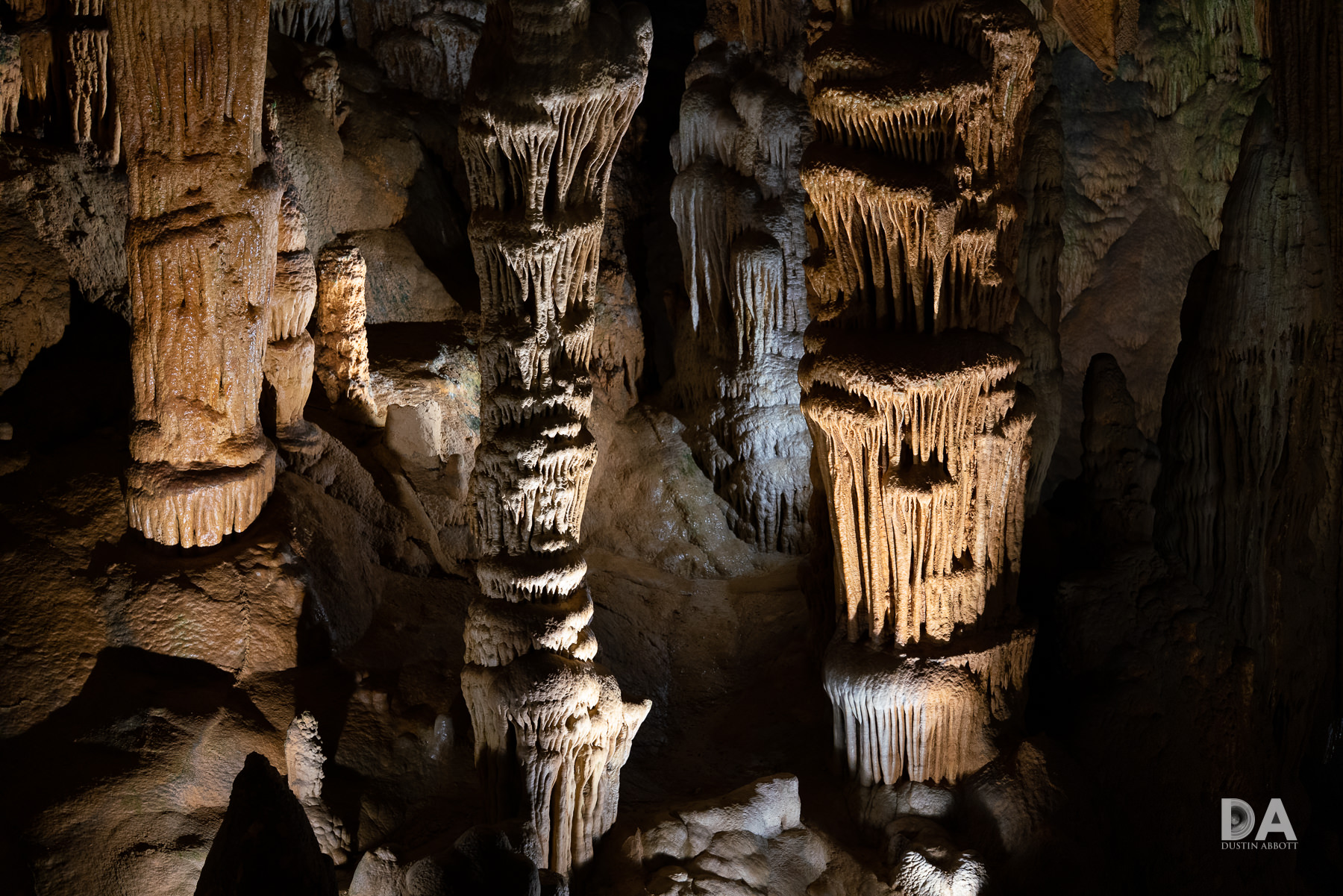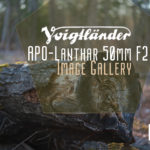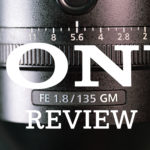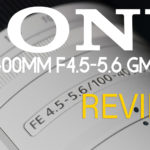I’ve owned the outstanding Voigtländer APO-Lanthar 65mm F2 Macro for several years now, and was intrigued with Voigtländer announced the Voigtländer APO-Lanthar 110mm F2.5 Macro lens. My access to Voigtländer lenses in Canada is limited, so I jumped on a unique opportunity to review the 110mm and 40mm F1.2 lenses. Unlike the 65mm (which is just a 1:2 or “half-size” macro), the 110mm F2.5 is a full 1:1 Macro. If it shows the incredible sharpness, contrast, and color of the 65mm, it will be a truly special lens. The 110mm F2.5 is a fully manual lens, though it does have electronic contacts and operates essentially like the Zeiss Loxia series lenses on Sony FE (full frame E-mount). So is it a usable lens despite being manual focus? Does the APO 110M (as we’ll call it for brevity in the review) have the superb optical performance of the 65mm? These are among the other questions we will attempt to address in this review.
First, a note on manual focus in general. Whether or not the manual focus nature of the APO 110M is a liability to you will depend chiefly on what you intend to do with the lens. Many macro shooters prefer manual focus (even when using AF lenses) because manual focus gives you precision over just where you want focus to be. The razor-thin depth of field at macro distances often make it difficult to put a focus point exactly where you want, so manual focus often gives you more precision. A good manual focus lens (like this one) makes that process easier because the focus ring is smoother and often has more focus “throw”. If you want the focal length for general purpose, however, you will be less satisfied, though for portraits the lens is still good because the fully retracted position (the barrel extends as you focus towards macro) is actually at infinity, and the focus throw is relatively small and simple at portrait distances (more on the optical quality for portraits in the image quality segment).
Where the APO 110M’s long focus throw can be a little exasperating is in either general purpose shooting that includes both close and distant focus (it takes nearly four rotations of the ring to get from macro to infinity territory) or when trying to do video focus pulls. The focus throw is just too long to do serious focus pulls even though the focus ring moves very smoothly.
But there’s no question this lens has incredible optics and produces beautiful images, so if you aren’t turned off already, read on and discover if the small but optically proud Voigtländer brand has your new lens.
Prefer to watch your reviews? I have both a standard length and more detailed “definitive” video review available:
Thanks to B&H Photo for the loaner copy of the lens! I’ll be reviewing the Voigtländer 110mm F2.5 Macro on my Sony a7RIII and Sony a9 bodies.
Follow Me @ Patreon | My Newsletter | Instagram | Facebook | Twitter | Flickr | 500px
Voigtländer APO 100M Build and Handling
Voigtländer is actually the oldest continually operating camera company in the world, and there is a classic charm to their lenses. They are very, very similar to what is now called the “Classic” Zeiss series, in that construction is all metal and glass. The lenses themselves are beautiful, with a satin, anodized finish that is sleek and premium in all the right ways.
One of the most controversial aspects (at least for purists) of the newer Zeiss lenses is that they have transitioned from a knurled metal focus ring to a rubberized surface on the focus rings. Some users have reported wear-related issues with this (I haven’t seen them myself) whereas the metal focus rings last for decades (I’m still using some vintage lenses that 50+ years old). The APO 100M follows the Classic pattern, with a knurled metal focus ring that looks great, has excellent grip, and moves with beautifully damped, creamy smoothness. It’s a world away from the feel of the Zeiss Makro-Planar lenses (pre-Milvus), that had unnecessarily heavy damping. I’ve yet to use a Voigtländer lens (I’ve owned or used five now) that didn’t focus beautifully, and the APO 110M is no exception.
What I’m less crazy about is how long the focus throw ends up being on a 1:1 manual focus lens like this. By my estimation there is about 450 degrees of rotation in the focus ring, which takes about 4 1/2 standard wrist rotations to go from one extreme to another. As mentioned previously, the long focus throw is a positive if you are doing macro and are already in that range, as you have a lot of precision. It’s also not bad when shooting infinity or portrait length shots, as the focus throw in that range is adequate without being gratuitous. But in the 1:2 range (half a meter/2 feet) range, you are going to have to do quite a bit of focus rotation from either extreme, so it is hard to get there quickly. The same is obviously true if you are going to make any kind of significant focus change. This is not a “fast” lens to operate.
It’s worth noting that the APO 100M extends much further when focused towards minimum than does the APO 65M. The photo above shows that when the two lenses are in their fully retracted position, they are quite similar in size. They are within a fraction of a millimeter in diameter and about 8mm different in length (roughly a quarter of an inch). But when they are fully extended (at minimum focus), they APO 100M extends significantly more.
Fully extended, the length grows from essentially 100mm to 160mm, and if you add the lens hood into the equation, that length grows to about 210mm. The Sony 90mm F2.8 Macro G OSS is probably the chief competitor to this lens, and, as the chart below shows, it is about 31mm longer when the Voigtländer is retracted, but is roughly 30mm shorter when the APO 100M is extended.
Part of the reason for the difference in extension between the two Voigtländer lenses is that the 65mm has only 1:2 macro capabilities, which achieves this degree of magnification:
The APO 110M is a 1:1 macro, however, which gives this degree of magnification:
And that goes a long way to defining the respective role of these two lenses. I view the APO 65M as a Zeiss Makro-Planar 50mm F2 type lens – an optically impressive general purpose prime that also does macro(ish) work. It is for those whose macro is more like product or food photographer, and not for those wanting to do high levels of magnification work. The APO 110M is really for those for whom macro is the priority and might do other types of work with the lens less frequently.
The working distance on the APO 110M is pretty good (35cm/13.78″ MFD), but remember that more than half of that will be taken up by the lens and hood if you have it attached.
Speaking of the lens hood: this is one of my least favorite elements of the design. While the hood itself is a matching metal and is beautifully made with with metal ridges inside to help stop light from bouncing around, the ergonomic execution of the hood leaves a lot to be desired. First of all, it is a screw-on rather than bayonet-style, so it will occupy the 58mm filter threads on the bare lens. The lens actually tapers in towards the front of the lens, so while it is slightly wider in diameter than the 65mm, it actually has a smaller front filter thread (58mm vs 67mm). The lens hood continues that taper, so it actually doesn’t fit reversed at all, meaning that you cannot store the lens with it reversed on the lens. This is true with other Voigtländer lenses as well, though more obtrusive here than most because the hood is larger. The hood is threaded at the other end, so you can continue to use filters, though now the filter thread is 67mm. It ships with a second lens cap (at 67mm) that you can use instead of the 58mm pinch cap for the bare lens.
The downside of all of this is that there is a good chance the lens hood will stay home more often than not for many users. The lens is compact enough for easy storage without it, but might not fit as well in your backpack or bag with the lens hood attached. Not being able to reverse a hood for storage when it is more significantly sized is certainly a liability. I also hate to hide that front view of the lens, as it is lovely:
A look at the rear of the lens shows two things: 1) there is electronic contacts present and 2) there is no weather sealing gasket.
The first is good news, as it means several things. First of all, while there is a manual aperture ring, aperture changes are shown in camera, which helps you to know your aperture when looking through the viewfinder and also records that information in the EXIF data, which can help with sorting and knowing your settings later in post. It also means that information is automatically transmitted for correct stabilization settings for the SteadyShot in cameras so equipped. Finally, it also means that Focus Assist is enabled, meaning that when you begin to manually focus, the active focus area will be magnified, which is very useful for visually confirming focus.
The second thing is not so good of news, as the lack of a rear gasket points to the fact that the lens (like other Voigtländers) does not have any kind of weather resistance. This is a premium lens, and it has become common for premium lenses to be equipped with this. I wish it were present.
I’ve got one other gripe, and that is related the aperture ring. The aperture ring itself moves nicely, with well defined detents at one-third stop intervals. So far so good, right? What I don’t like is the design of the ring itself, however, as, unlike just about any other such lens that I’ve used, the aperture ring is recessed rather than raised. That makes it much hard to find by feel, and I found in real world use that I tended to feel around trying to access it when my eye was up against the viewfinder. Not optimal, and I definitely prefer the placement of the aperture ring on the 65mm; it is located at the front of the lens and is raised rather than recessed.
Those criticisms aside, the lens itself is a premium bit of kit with a beautifully engineered fit and finish. IT has that uniquely dense feeling I often get from Zeiss lenses that speaks of a lot of high grade metals and premium optical glass. At 771 grams, it isn’t a light lens, nor is it prohibitively heavy. It will cause a slight front-heavy feel on Sony cameras (evidenced by the fact I had to prop the lens up for this photo):
The APOP 110M is a lens designed to last for decades and will strongly appeal to those who appreciate finely made things on a visceral level. It looks great on your camera!
Voigtländer APO 110M Image Quality
You might have wondered why I’ve been emphasizing the APO in this review. It is because this is one of the two most important parts of the optical performance of this lens. APO is short for Apochromatic. A lens with an Apochromatic design has better correction of chromatic and spherical aberration than the much more common achromat lenses. Put simply, most lenses struggle with the fact that colors don’t always focus at the same distance, which results in green or purple (red) fringing due to the fact that those colors aren’t focusing on the same plane of focus. Whereas most lenses are corrected for two color wavelengths (typically red and blue), an apochromatic lens is able to bring three color wavelengths into focus on the same focus plane. This produces a near absence of chromatic aberrations and allows for higher contrast and a near absence of the veiling (lack of contrast) that produces “soft” images. True apochromatic lenses tend to be very sharp and very contrasty (it’s worth noting that all of the Zeiss Otus lenses are APO designs). They also are corrected for spherical aberrations on two wavelengths rather than one. Real world translation? Look at the complete lack of longitudinal chromatic aberrations either before or after the plane of focus in test:
Typically one would see some purple fringing before the plane of focus and green afterwards. What we instead see is a near-perfect correction of aberrations. This has real-world ramifications, as it allows incredibly good contrast and “pop” to colors. This particular image really highlighted to me how that great glass can elevate something simple and make it special. Look at how gorgeous the clarity and color is on the crop:
That is near perfect, and you can see the gorgeous microcontrast if the textures and fine details. It also highlights the secondary strength of Voigtländer lenses in general, and that is that they (like Zeiss) have very, very special optical glass that produces stunningly good color. Every Voigtländer lens that I’ve used has consistently left me very pleased with the color rendition – it is both rich and accurate. In a head to head between this lens and another incredible APO lens (the Zeiss Milvus 135mm F2), I actually felt that the Voigtländer color was a little bit better (though the Milvus is a bit sharper). You’ll also note the 110mm is a more flattering focal length for human features (at head and shoulders distance), with less compression than the longer 135mm focal length.
A look at vignette and distortion shows that there is a very mild amount of pincushion distortion that shouldn’t be a negative factor (and is, in fact, a positive for portraiture). Vignette is more pronounced, though not terribly offensive. It will work well for portraits in many situations, and, as the corrected side shows, cleans up nicely either in camera (JPEGs and Video) or in post (RAW/ARW files).
How about sharpness? Here’s a look at my test chart:
What follows are crops from the center, mid-frame, and corner.
What we can see from the center is that even wide open at F2.5 the sharpness and contrast are impressively good. You can read the fine text on the bill even when shooting about 3 meters away. At the mid-frame, I do see a mild regression, as the upper left corner of the bill is sharper than the lower right corner. We also see some reduced contrast in the corner crop.
It’s in this metric that the 65mm both shows its worth (it is one of the best lenses I’ve tested) and also demonstrates that the 110mm can’t quite match its performance there.
That’s not the case in the center of the frame, however, as while the lenses are close, I think the 110mm has more contrast, pop, and perhaps slightly purer color.
Both lenses are extremely sharp, obviously, but the 65mm has a more even performance across the frame.
Real world performance at F2.5, however, is very impressive. Look at how great the contrast and sharpness is here even though the crop is taken from that mid-frame position.
Here’s another example where the crop is taken from the lower third of the frame. It is this type of shot that most impresses me, as I am very familiar with these kinds of conditions. Small “blossoms” like this are very hard to resolve because there are a lot of areas of fine detail with a lot of contrast points. This is exacerbated by the snow, which tends towards “hot spots” (bright areas) and transitions where chromatic aberrations often come out. I shot this same shot with the 40mm F1.2 (at F1.4), and it really struggled. The APO 110M passed this test with flying colors.
This remains true at macro distances, where the lens resolved the fine details crisply and without aberrations even at F2.5.
There is minimal improvement from F2.5 to F2.8, but the corners look significantly sharper by F4:
This becomes a lovely landscape lens at smaller apertures, delivering great amounts of detail and rich colors.
Often bokeh is the area that slightly suffers with APO lenses. A bit of chromatic aberrations (and spherical aberrations) produce less contrast, which results in softer defocused areas. APO lenses banish CA, which in term can produce more contrast in the defocused regions. Some lens makers do a good job with this, however, and produce lenses that can give amazing clarity but also quite nice bokeh (the Otus series comes to mind). I think the APO 110M does a fairly good job, too, with a number of shots delivering what I consider very nice bokeh. Here’s a sampling at a variety of focus distances.
Where I’m less impressed is in a typical sore spot with either Zeiss or Voigtländer lenses: the aperture blades are straight, not curved, which means that you start to see the shape of the aperture fairly quickly as the lens is stopped down. In this case the lens has 10 aperture blades, which is a bit better as more blades equals a more circular shape. You will start to see that decagonal shape fairly soon. Here’s wide open, F4, and F5.6:
You can see from the wide open example that the bokeh is quite soft, though there is some geometric deformation at the edges of the frame.
One final area of consideration is flare resistance. Wide aperture, medium telephoto lenses are rarely great in this metric. The APO 110M falls somewhere in the middle of the pack. Wide open you will see some prismatic haze but few ghosting artifacts. Stopped down (second example below is at F11) you see a bit less veiling but more obvious ghosting particles. When panning across the sun the flaring is worse when the sun is in the corner of the frame or right out of the frame. It is those cases where using the lens hood helps a bit but doesn’t eliminate the problem.
The longer focal length means that you will rarely have a situation where you can’t avoid backlighting, however, so you will just need to creatively frame to minimize the damage.
All told, however, this lens has beautiful image quality, and that remains true if you are shooting at macro distances:
It’s worth noting that I shot this image handheld (thanks to the IBIS of my Sony a9), so that further adds to the usefulness of the lens. If you would like to see more photos from this beautiful lens, check out the image gallery here.
Conclusion
The Voigtländer 110mm F2.5 APO-LANTHAR Macro is one of the more unique lenses available on Sony. It mixes high end optical performance with old-world sensibility in lens design. It essentially is like a Zeiss Makro-Planar lens designed specifically for Sony. The APO 110M produces stunning images at any kind of focus distance, from macro to infinity.
It is also reasonably priced compared to the competition. One would pay closer to $2000 for the Milvus version of the Zeiss 100mm F2 Makro lens, but the APO 110M comes in at a more palatable $1000 USD. The Zeiss MP lenses are also only 1:2 magnification. The Sony 90mm F2.8 G OSS is going to be the primary competitor, and it will be the practical choice with both autofocus and OSS (image stabilization) and costing about $100 more.
But the Voigtländer 110mm isn’t really about practicality, ultimately. No manual focus lens in this automatic era is. It’s more about a passion for beautifully made optical instruments that can produce stunning images. It’s for those who want to be more deliberate, more in control of the process, and those who feel a sense of pride when they are more intimately involved with the image creation process. I own multiple macro lenses, so I prefer the flexibility and handling of the Voigtländer 65mm F2 Macro, myself, though if you need a 1:1 macro lens, this is the way to go. One thing is sure: I love the kinds of images you can produce with a lens like this, and I often enjoy the more deliberate process associated with it when I have the time. And maybe, just maybe, you feel the same.
Pros:
- Beautiful, premium design with exquisite materials
- Smooth, nicely damped focus ring
- Electronic communication simplifies manual operation
- Stunning, accurate colors
- Amazing center sharpness
- Great sharpness across the frame at smaller apertures
- APO design practically eliminates CA
- Nice bokeh in most situations
- Not exorbitantly priced
Cons:
- Focus throw can be prohibitively long in some applications
- Corner sharpness not as good as the 65mm F2
- Aperture ring hard to find by feel
- No weather sealing
Purchase the Voigtländer 110mm F2.5 Macro @ B&H Photo | Amazon | Amazon Canada | Ebay
Sony a9 Camera: B&H Photo | Amazon | Amazon Canada | Amazon UK | Amazon Germany | Ebay
Sony a7RIV Camera: B&H Photo | Amazon | Amazon Canada | Amazon UK | Amazon Germany | Ebay
Sony a7R III Camera: B&H Photo | Amazon | Amazon.ca | Amazon UK | Ebay
Peak Design Slide Lite: Peak Design Store | B&H Photo | Amazon | Amazon Canada | Amazon UK
Peak Design Leash Strap: Peak Design Store | B&H Photo | Amazon | Amazon Canada | Amazon UK
BenQ SW271 4K Photo Editing Monitor – B&H Photo | Amazon | Amazon.ca | Amazon UK
Adobe Photoshop Creative Cloud 1-Year Subscription
Exposure Software X5 (Use Code “dustinabbott” to get 10% anything and everything)
Want to support this website? Use these links to shop at:
B&H Photo | Amazon | Ebay | Make a donation via Paypal
Visit Dustin’s Amazon Storefront and see his favorite gear
Purchasing your gear through B&H and these links helps fund this website and keeps the articles coming. You can also make a donation here if you would like. Visit my Amazon page for some of my gear of choice! Thank you for your support.
Great News! I can now offer a 5% discount on all purchases at Amplis Foto, Canada’s Leading Photographic Supplier. Please enter discount code: AMPLIS52018DA in your cart. It is good for everything in your cart, and is stackable with other coupons, too! It will take 5% off your entire order! Proceeds go towards keeping this site going and providing you with new reviews!
Check me out on: My Patreon | Sign Up for My Newsletter | Instagram | Facebook | Twitter | Flickr | 500px | Google+ |
Use Code “DUSTINHDR” to get $10 off ($15 CDN) any Skylum product: Luminar, Aurora, or AirMagic
Keywords: Voigtlander, Voigtländer, APO-Lanthar, APO, Lanthar, Macro, 110mm f/2.5, Voigtlander 110mm Review, Voigtlander 110mm f2.5, Review, Dustin Abbott, Voigtlander 110mm f/2.5 APO-Lanthar Macro, Voigtländer 110mm Macro, Voigtländer 110 Macro, FE, Sony, a7R3, a7RIII, Sample Images, Video Test, YouTube, Comparison, Apochromatic, Sharpness, Video, Zeiss, Sony a7RIII, Sony A7RIV, Sony a7R IV, Sony a9, Hands On, Video Test, Portrait, Video, Sharpness, Real World, Comparison





